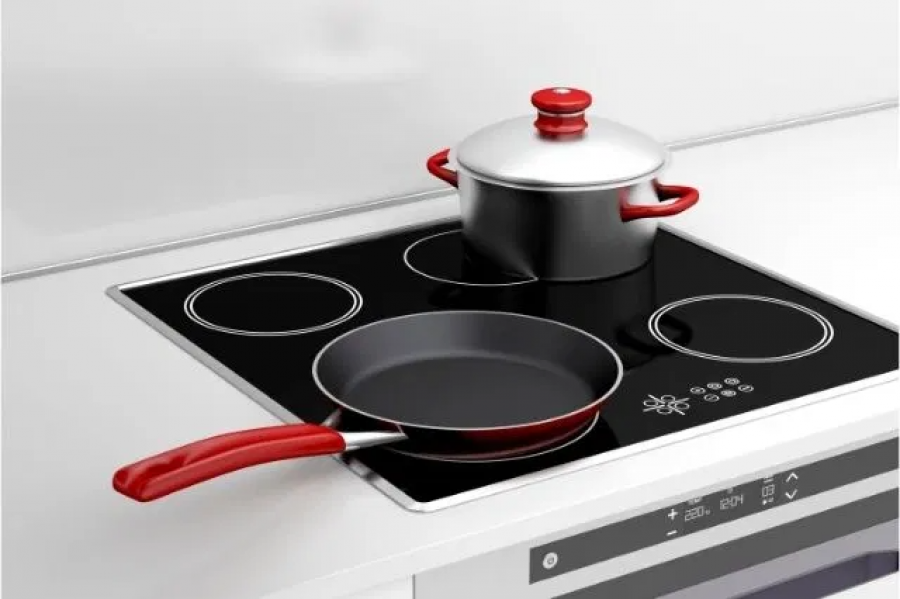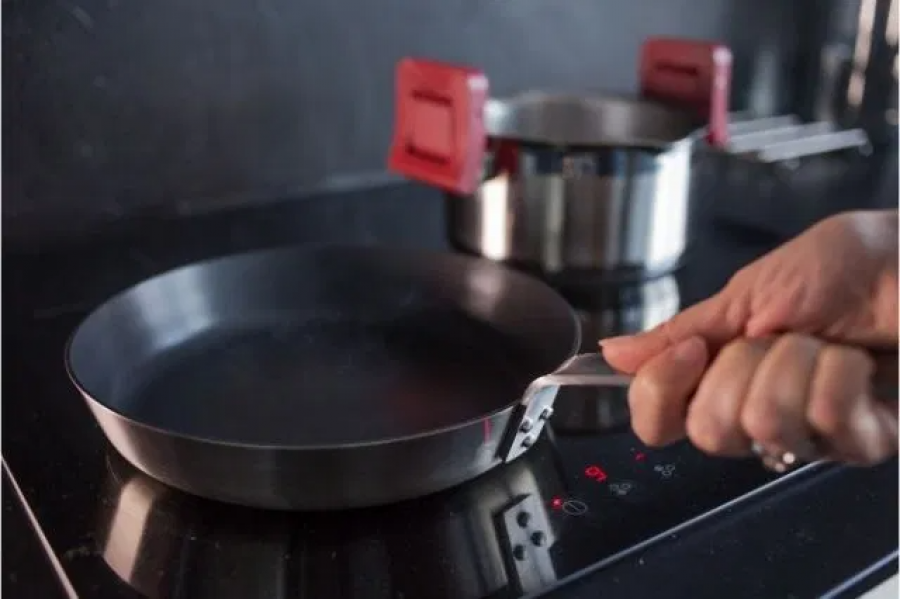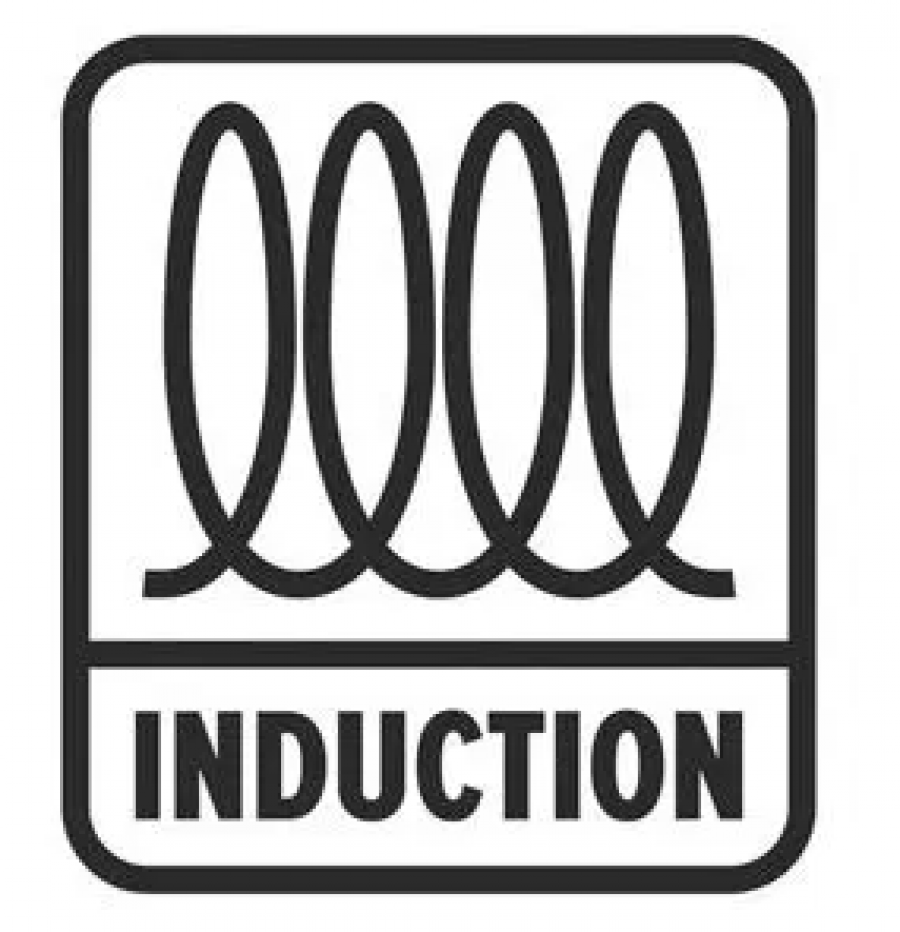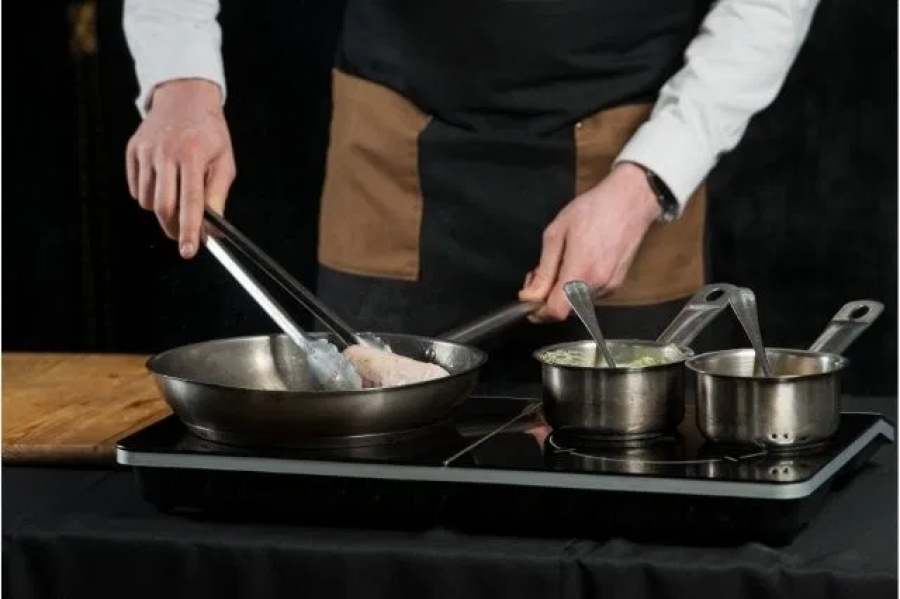If you’re looking into transitioning from the traditional gas and electric stoves to modern efficient and super-fast induction cooking, you may want to read on.
Induction cooktops use technology unlike electric or gas cooking. This unique cookware comes with magnetic iron flat bases, which will create an electromagnetic pool to heat the pan and cook your food.
Induction cooking is becoming increasingly popular thanks to its numerous economic and health benefits compared to traditional gas or electric cooktops.
It is safe to use in school dorms and at home around children, since the heat generated does not produce flames and your cooktop will not overheat.
Induction cooking is energy-efficient as well, since both the stove and pan use magnetic currents to heat up.
The heat current is only transferred to the cooking pan’s base, thereby saving heat that would have spread all across the pan when using a gas stove.

What is Induction Cookware?
An induction cooktop will only work with magnetic, flat-base cookware. The magnetic coils underneath the glass cooktop transfer currents to the cookware’s magnetic bottom for heat.
Glass, aluminum, copper, and some stainless steel cookware are not induction-ready unless the brand has attached a separate magnetic base.
Stainless steel, cast iron, and enameled iron cookware with a strong magnetism will light up once placed on your induction cooktop if they’re compatible. It is important to note that not all steel cookware is induction ready.
Stainless steel comes with different alloys, which may include nickel and iron to create an anti-corrosion base. The presence of nickel may hinder magnetism, making your cookware incompatible.
Some induction-ready cookware brands include Woll Cookware, Viking Cookware, Demeyere Cookware, and Staub Cast Iron.
So, how can you tell if your cookware is induction-ready?
How do I know if my cookware is induction compatible?

The best induction cookware is compatible with pots and pans that have magnetic fields at the bottom to allow seamless cooking.
The cookware must be flat and fit on the diameter of the cooktops. There are three simple tests you can perform at home to test whether your cookware is induction compatible.
1. Magnetism
First, you can use any magnet in your home to test the base of your cookware. Place it on the base of your pot or pan and wait for the reaction. If it attracts the magnet, your cookware is induction-ready.
2. Induction Cookware Symbol
Second, check for the induction cookware symbol. Most brands label their products on the base as induction-ready using the word ‘induction’ or a symbol of four loops.

3. Test The Pan
Lastly, you can place your pan on the cooktop with a bit of water and turn it on. If the water boils, then your cookware is induction-ready.
How to Use Non-Induction Cookware on Induction Cooktop
The only downside of induction cooktops is that you must use compatible cookware. This cookware must be flat-based, magnetic, and have the correct diameter.
However, you can also use induction-ready cookware on gas and electric stoves.
Luckily, there also exist pan adapters and converter disks to ensure that you can still use your favorite cookware on an induction cooktop.
You can use these flat disks to transfer heat under your regular pan. Place the converter disk on the cooktop, then place your ceramic or any other incompatible pot on top, and you’re ready to cook.
The problem is that induction converter disks are only about half as efficient as induction cookware.
Boiling a pot of water using induction-ready cookware takes nine minutes, while using a pan adapter would take eighteen minutes.
If this is too slow, replacing your pots and pans would be a better option.

Benefits Of Induction Cooking
Let’s look at the numerous benefits of using induction cooktops that make this cooking method more popular by the day:
Safety
Induction cooktops are safe to use. Forget about the age-old worry of ‘did I turn the stove off?’; once you remove your cookware from an induction cooktop, it automatically shuts off.
Heat will only generate when magnetism is detected. It is also safe to use around children and pets since it does not produce flames.
Energy Efficiency
Induction cooking is more efficient than gas or electric cooking. Ninety percent of the heat generated is transferred directly to the food.
This means there is less residual heat than traditional cooking, leading to a lower energy bill.
Speed
Induction cooking is faster! Because of the direct energy transfer, induction cooking takes about half the time to cook food compared to traditional gas and electric stoves.
Cool cooktop
The absence of flames means the cooktop stays cool and does not heat up. You won’t have to worry about burning your fingers if you accidentally touch it while it’s on.
Ease of Cleaning
Cleaning is also quite easy, as the food spilled on an induction cooktop does not burn and stick. Most induction cooktops come in smooth flat models without cracks where spilled food would otherwise hide.
Aesthetic
These cooktops are sleek and modern-looking. The black, glass tops blend in well with any kitchen decor.

Temperature Control
Because induction cooktops heat food faster, they also cool down quicker. This allows you to control the temperature as desired and create the best meals possible.
Portability
Portable induction cooktops are a great option for saving space, which makes them ideal for school dorms, apartments, and mobile food trucks.
Frequently Asked Questions
Can I use normal cookware on an induction cooktop?
You can only use compatible cookware that is flat and comes with a magnetic base. Your regular cookware may not have the needed material to create an electromagnetic field for cooking.
However, you may purchase a pan adapter and place it under your pan to use on the induction cooktop with everyday cookware.
Is stainless steel induction ready?
Not all stainless steel is induction-ready. Stainless steel comes as an alloy of different materials that will create corrosion resistance.
These alloys include Nickel, whose presence may hinder the magnetism needed to heat it.

Is Cast Iron Induction Compatible?
For the most part, yes. However, pay special care not to scratch the surface of your induction cooktop, as cast iron pots and pans often have rough edges and bumps.
Induction Pots and Pans in a Nutshell
Induction cooking is the way to go if you’re looking for a fast and efficient modern cooking method.
You can create lasting memories by teaching your kids or teenagers to cook using induction cooktops since they don’t heat up and are cool to the touch.
Transitioning to induction cooking may have a bit of a learning curve, because it tends to heat up and cook food much faster than a traditional gas or electric stovetop.
You also might need to replace your old cookware with induction-ready products. This may be costly, but the energy efficiency of induction cooking will save you the money you would have otherwise spent on gas or electric bills.
On the other hand, cheaper options for using your favorite standard pots on the induction cooktop will require you to invest in a pan adapter or converter disk to transfer heat.
You can check if your cookware is induction cooktop compatible by using the method outlined above.